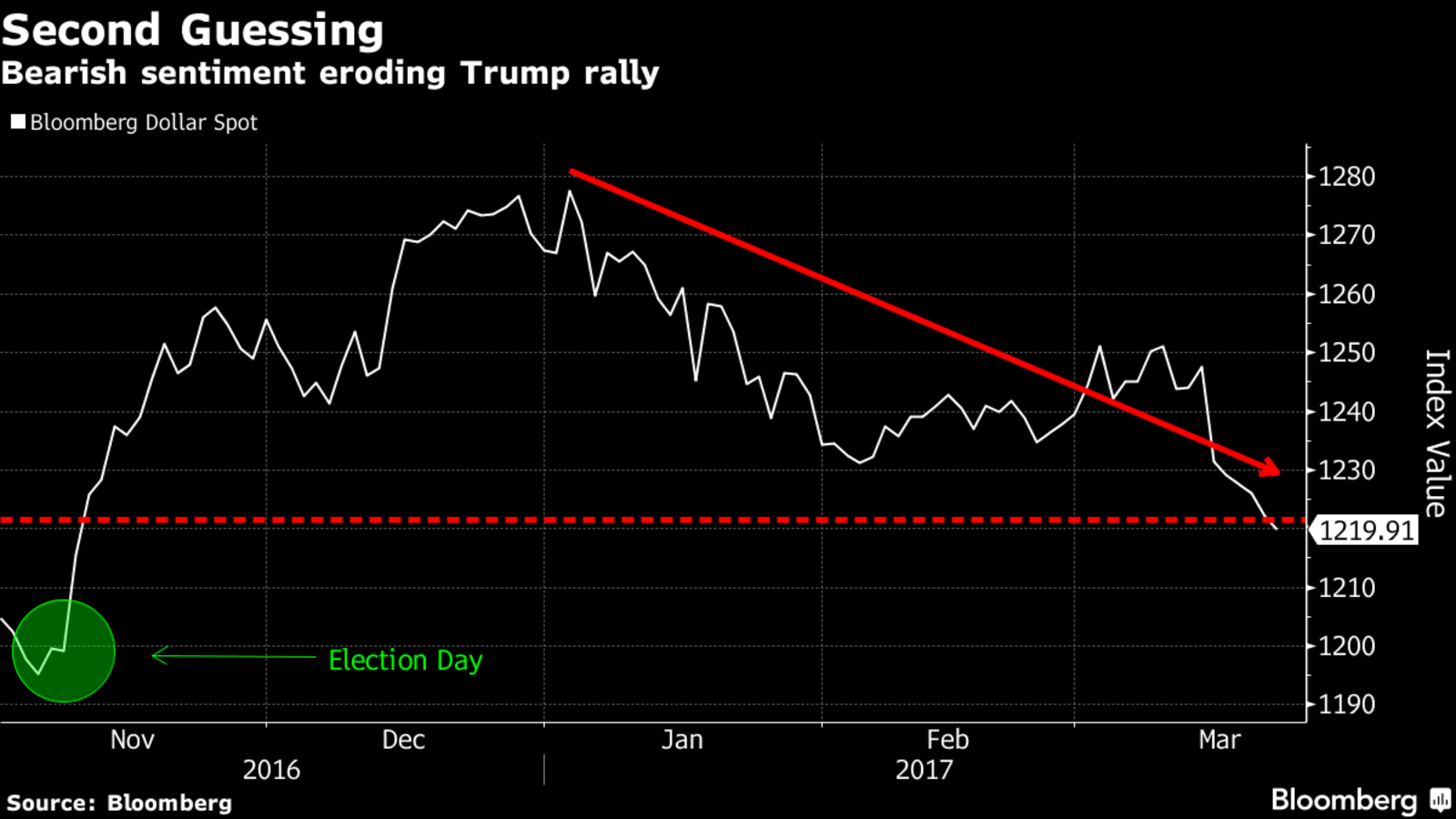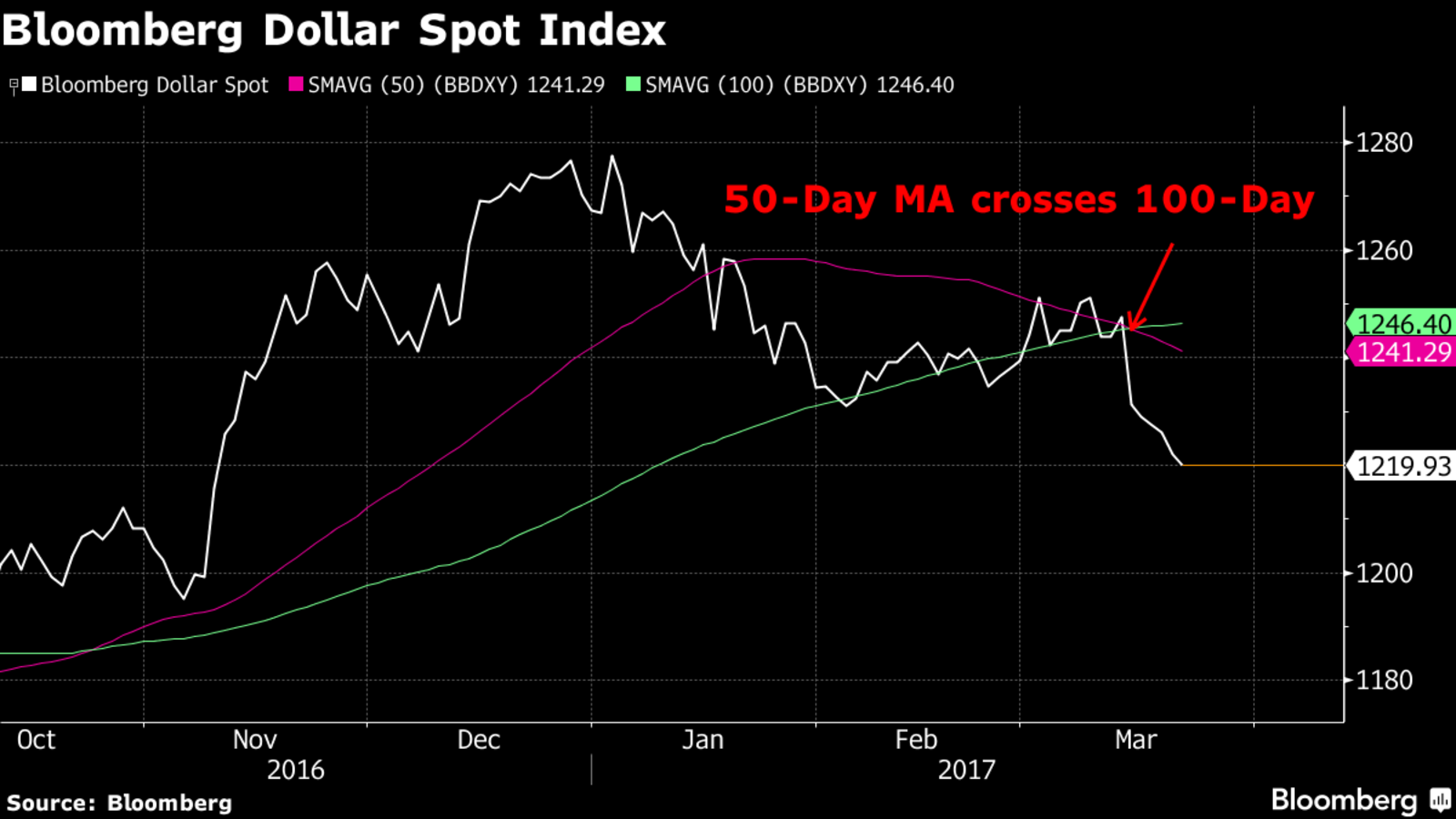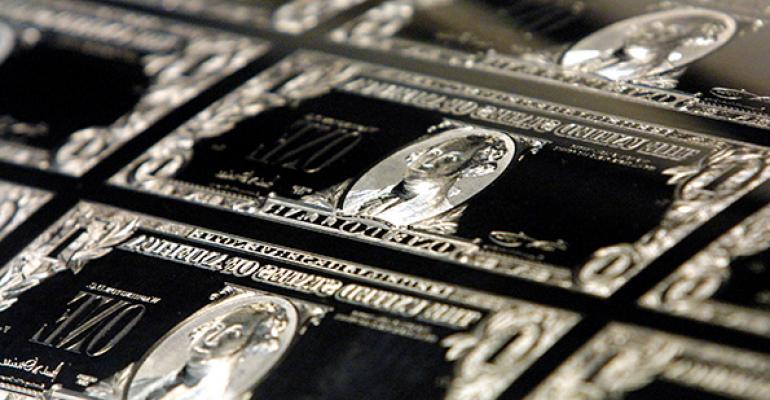By Lananh Nguyen and Robert Fullem
(Bloomberg) --Dollar bears are back from the wilderness.
The currency slid to the lowest since November on Wednesday, and options show investors are becoming more pessimistic on the greenback versus the euro and yen. The dollar has almost erased its gains from the so-called Trump Trade, as pro-growth policies from the presidential administration have yet to materialize. UBS AG’s wealth-management unit recommended selling the dollar against the euro, and JPMorgan Chase & Co., the world’s second-biggest currency trader, advised clients to ditch bullish bets in the short term.
“The case has become more compelling” to short the dollar, said Constantin Bolz, a foreign-exchange strategist at UBS in Zurich. The bullish dollar consensus since Donald Trump’s election in November “is turning step by step” as markets question U.S. policies and their effectiveness.
UBS sees the euro-dollar exchange rate climbing as high as $1.15 over the next six months from $1.0784 Thursday. It expects dollar-yen to fall to below 110 yen in the same period.

The U.S. currency has fallen 3.7 percent this year as traders awaited details on the size and scale of fiscal-stimulus proposals and cues from the Federal Reserve about the path of interest-rate increases. The weakness follows four years of gains as the world’s largest economy recovered from the financial crisis and the Fed began to nudge borrowing costs higher. The Bloomberg Dollar Spot Index was little changed Thursday.
Technical Indicators
In options markets, protection against a rising dollar is getting cheaper as the outlook on the currency becomes more pessimistic. Risk reversals, an indicator of market sentiment and option positioning, have been signaling a shift away from dollar bullishness.
The EUR/USD one-year risk reversal has plunged as markets discount the prospect of Marine Le Pen winning the French election.
Investors are also less bearish against the euro versus the dollar. The so-called smile of one-year volatility, which reflects the cost of protecting against low-probability events, has flattened. A JPMorgan Chase & Co. measure of volatility in G-7 currencies is below its average for the past year, and not far from the lowest level since 2014.
Similarly, the dollar-yen one-year risk reversal has gone up.
Another bearish signal is the Bloomberg dollar spot index’s 50-day moving average crossing under its 100-day moving average.

Here’s what others are saying about the dollar’s outlook:
- “The drags on the dollar that we have identified and discussed so far this year – poor relative economic momentum, dollar-negative Washington risk from dollar policy and trade rhetoric, and global reflation -– will persist.” --JPMorgan
- “Recent developments have increased our conviction that the path of least resistance for EUR-USD is upward.” -- UniCredit SpA
- “USD positions accumulated in the build-up and immediate aftermath of the U.S. election look to have been fully unwound.” --Bank of America Corp.
- “If a) healthcare reform passes the House and b) the USD still gets no lift or weakens further, we may need to think again with respect to our current modestly bullish forecast profile.” --Credit Suisse AG
To contact the reporters on this story: Lananh Nguyen in New York at [email protected] ;Robert Fullem in New York at [email protected] To contact the editors responsible for this story: Boris Korby at [email protected] ;Jeremy Herron at [email protected] Dave Liedtka, Mark Tannenbaum





